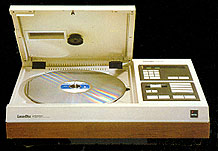
A vision comes to life
The total-system concept in audio/video home entertainment has finally become a reality. Pioneer's
exciting new VP-1000 LaserDisc player not only incorporates the world's most advanced optical laser pickup for
the reproduction of high-density color video images, it also brings full fidelity stereophonic sound into your
home as well.
 The technological and practical capabilities of LaserDisc are enormous. The system
can, for instance, store up to 54,000 separate video "frames" on one side of a videodisc and let you view them
one at a time if you wish. In addition to the many hundreds of hours of feature-length films, dramas, comedies,
sports, special musical concerts and other entertainment on VP-1000 compatible video discs, there are numerous
educational and cultural programs (such as art) which make ideal use of the single-frame viewing capabilities
of the system
The technological and practical capabilities of LaserDisc are enormous. The system
can, for instance, store up to 54,000 separate video "frames" on one side of a videodisc and let you view them
one at a time if you wish. In addition to the many hundreds of hours of feature-length films, dramas, comedies,
sports, special musical concerts and other entertainment on VP-1000 compatible video discs, there are numerous
educational and cultural programs (such as art) which make ideal use of the single-frame viewing capabilities
of the system
And because it is a total system in design as well as concept, you can easily
integrate the VP-1000 player into your present home stereo hi-fi. One simple wire connects the player to your
TV set, and two jack plugs interface its audio output with your stereo amplifier, receiver or music system.
Naturally, the Pioneer LaserDisc Player can be used with any quality projection-TV equipment. The high
resolution of the picture - unlike that of home video tape units - ensures a crisp, clear picture with high
contrast and vivid colors, even on wide-screen TV.
The world of electronic home entertainment - both "hardware" and "software" - has
envisioned such a total audio/video system for decades. But it took Pioneer and the remarkable VP-1000
LaserDisc Player to bring it about. See (and hear) for yourself how impressively alive that vision has become.
The player and how it works
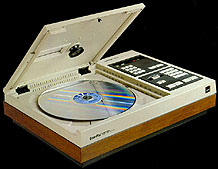 If the capabilities of the Pioneer VP-1000 LaserDisc Player are straight out of science fiction, its looks are
not. It resembles nothing more than an ordinary phonograph turntable with a few modifications here and there.
But three essential differences make it something else entirely. First, it has no "needle" to grind away at
the record. Instead it uses a low-power laser beam to pick up encoded information from the LaserDisc record
for translation to pictures and sound. As we will explain, this "non-contact" system causes absolutely
no wear on disc or player. Then, the Pioneer VP-1000's platter speed is over 50 times faster than the
33⅓ rpm of an ordinary phonograph - a smooth and silent 1800 rpm for standard hour-play (total)
LaserDisc records. Finally, Pioneer has included an array of microcomputer controls to permit program search
and display functions no ordinary phono turntable could begin to offer. Actually, the remarkable VP-1000 is a
product of state-of-the-art science fact, not fiction. And that's just the beginning.
If the capabilities of the Pioneer VP-1000 LaserDisc Player are straight out of science fiction, its looks are
not. It resembles nothing more than an ordinary phonograph turntable with a few modifications here and there.
But three essential differences make it something else entirely. First, it has no "needle" to grind away at
the record. Instead it uses a low-power laser beam to pick up encoded information from the LaserDisc record
for translation to pictures and sound. As we will explain, this "non-contact" system causes absolutely
no wear on disc or player. Then, the Pioneer VP-1000's platter speed is over 50 times faster than the
33⅓ rpm of an ordinary phonograph - a smooth and silent 1800 rpm for standard hour-play (total)
LaserDisc records. Finally, Pioneer has included an array of microcomputer controls to permit program search
and display functions no ordinary phono turntable could begin to offer. Actually, the remarkable VP-1000 is a
product of state-of-the-art science fact, not fiction. And that's just the beginning.
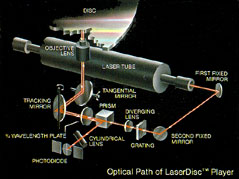 To understand how the Pioneer VP-1000 LaserDisc Player works, you should first know a
little about the LaserDisc records themselves. Program information is stored in billions of microscopic
indentations etched beneath the surface. A layer (1.1mm) of acrylic protects them from dust and fingerprints
(making LaserDisc records even easier to handle than ordinary phonograph records.)
To understand how the Pioneer VP-1000 LaserDisc Player works, you should first know a
little about the LaserDisc records themselves. Program information is stored in billions of microscopic
indentations etched beneath the surface. A layer (1.1mm) of acrylic protects them from dust and fingerprints
(making LaserDisc records even easier to handle than ordinary phonograph records.)
Though you can't see it, the information is arranged in circular tracks, 54,000 of
them, each constituting a separate video "frame" for continuous or individual display. The indentations and
the reflective surface of the LaserDisc record produce an unusual "rainbow" effect when viewed in ordinary
light. But when exposed to the tightly-focused light beam (0.001mm dia.) of the low-power laser pickup on the
VP-1000, they reflect high-density audio/video signals for reproduction. The illustration [on the left] shows
how the laser beam and disc interact in the Pioneer LaserDisc Player.
LaserDisc programming
 Thanks to the unprecedented direct participation on the part of Pioneer with world-famous
entertainment-industry leaders, LaserDisc-player-compatible programming is continuing to grow steadily in all
popular categories. And the cost to the viewer is decidedly lower than for video tapes. The currently
available catalog is far too long to repeat her in full, but these are some of the exciting categories of
programs you may enjoy with your Pioneer VP-1000:
Thanks to the unprecedented direct participation on the part of Pioneer with world-famous
entertainment-industry leaders, LaserDisc-player-compatible programming is continuing to grow steadily in all
popular categories. And the cost to the viewer is decidedly lower than for video tapes. The currently
available catalog is far too long to repeat her in full, but these are some of the exciting categories of
programs you may enjoy with your Pioneer VP-1000:
Feature and Classic Feature films - Current and well-remembered full-length motion pictures with the world's most famous stars.
Walt Disney Productions and Television Movies - Fun for the entire family, whenever and as often as you like.
Non-Feature Films - Learn cooking, golf or any of a dozen other arts and skills at home, at your leisure.
Informational / Education / Self-Improvement - Your home becomes a university staffed with an all-star faculty.
Spectator Sports - Adventure unlimited from your favorite armchair.
The Arts - Exciting lectures in art history and appreciation, personal visits with cultural leaders and front-row seats at "live" rock, pop, jazz and classical music concerts are yours to enjoy.
With the world's top entertainment, educational and cultural institutions solidly
behind LaserDisc as their tool of total audio/video communication, the library of worthwhile videodisc
programming is expanding at an incredible pace.
Features and functions
No videodisc equipment is more versatile or easier to operate than the Pioneer VP-1000 LaserDisc Player. Put
on a LaserDisc record, close the cover and push the PLAY button. When the picture appears on the TV
screen, select the desired mode on the electronic pushbuttons. (The same controls with the exception of
variable SLOW SPEED are found on the optional RU-1000 remote control unit.) Here is a summary of the various
handy control functions:
Play and Pause
Playback of LaserDisc records is begun when you touch the PLAY button, interrupted when you touch the PAUSE.
Nearly all of the many LaserDisc-compatible records now available are of the CAV (Constant Angular Velocity)
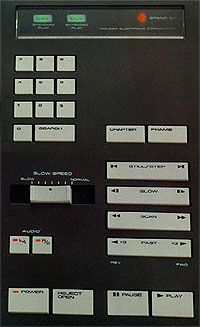 type with up to 30 minutes playing time per side and the added conveniences of Still-Frame "freeze" and the
Random-Access functions described below. But the Pioneer VP-1000 also lets you see CLV (Constant Linear
Velocity) LaserDisc records with the extended-play time of up to 60 minutes per side.
type with up to 30 minutes playing time per side and the added conveniences of Still-Frame "freeze" and the
Random-Access functions described below. But the Pioneer VP-1000 also lets you see CLV (Constant Linear
Velocity) LaserDisc records with the extended-play time of up to 60 minutes per side.
Fast x3
Normal video playback of CAV discs can be speeded up three times in both forward and reverse modes. This
feature enables you to review a section of the program quickly without losing track of the flow of its "plot."
Scan
Another special feature provides super-fast video playback of CAV and CLV discs alike. Use it for high-speed
search / review of an entire program, or to rapidly skip over parts you don't wish to view.
Slow
Also easy to achieve in either direction on CAV LaserDisc records. The rate of motion is variable from the
normal 30 frames per second to as slow as a single frame every 5 seconds. The uses of this special function
are limitless.
Audio
A LaserDisc record can have two soundtrack channels. You select stereophonic playback by pushing both buttons
under AUDIO. Or, push the L/1 or R/2 button individually to hear the left and right channels respectively,
which on certain LaserDisc programs contain the monophonic soundtrack in two different languages. (Audio
portions are not heard during Fast, Slow or Still-Frame play.)
Still-Frame "Freeze"
CAV records can be viewed one frame at a time when you use the STILL/STEP control for in-depth study of fast
action or complicated subject matter. This "freeze" function can be sued in either direction, with the image
changing each time you push the control. Because LaserDisc playback is the "non-contact" type, no wear
whatsoever can occur during still/step viewing.
Random-Access Search/Display
It's built-in microcomputer gives the Pioneer VP-1000 some very sophisticated special functions for use with
programming software of the CAV type encoded with frame and chapter numbers. Best of all, these functions are
available through complete "Random Access" - meaning they can be selected in any order at any time with the
light touch of a pushbutton. They include:
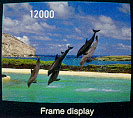
Frame Display
Each of the up to 54,000 frames on each side of a CAV LaserDisc record can be encoded with a number. With the
calculator-like buttons on the VP-1000, any individual frame can be displayed on your screen.
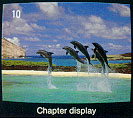
Chapter Display
Code numbers are also assigned to the different "chapters" of a program on some CAV LaserDisc records. They
help divide contents into major sub-sections for easier access by the viewer.
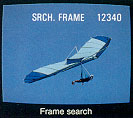
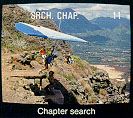 Rapid Frame/Chapter Search
Rapid Frame/Chapter Search
Again, because the LaserDisc is a "non-contact" system, the laser pickup is free to scan the disc at random,
guided not by the physical "grooves" or tape-running index numbers but instead by the microcomputer's
internal position sensors. The frame or chapter number you enter on the digital keys is instantly
displayed on the screen, then the laser searches for the spot you want to see. All this takes place faster
than you can say, "Pioneer's VP-1000 is a marvelous machine indeed!"
Specifications
General
System and disc specs: Compliance with Philips-MCA specifications
Maximum playing time: - Standard videodisc (CAV): 30 minutes/side
- Extended videodisc (CLV): 60 minutes/side
Spindle motor revolutions- Standard videodisc: 1800 rpm
- Extended videodisc: 1800 rpm (inner circumference) to 600 rpm (outer circumference)
Laser: 6328 angstrom, He-Ne 1mW
Video Characteristics
Video response: NTSC specification
Video Output
Level: 1 Vp-p nominal sync. negative terminated
Impedance: 75 ohms unbalanced
Terminal: F type jack
Signal to noise ratio: more than 42dB
VHF output
Channel: 3 or 4 (switchable)
Level: more than 60dBµ (complies with FCC specifications)
Impedance: 75 ohms unbalanced
Terminal: f type jack
Audio Characteristics
Audio output: Two channels; stereo or two individual channels
Level: 650mV nominal (1kHz 100% mod. 50k ohms terminated)
Impedance: Less than 2.2k ohms unbalanced
Terminal: Stereo pinjacks
Total harmonic distortion: Less than 0.3%
Signal to Noise Ratio: more than 55dB (1kHz 100% mod. using IHF A network for weighing)
Frequency Response: 40 Hz to 20 kHz (±3dB reference to 1kHz 10% mod.)
Functions
Play: Normal Play mode with sound
Pause
Fast x3: Forward and Reverse
Scan: Forward and Reverse (Scan time 90mm travel less than 30 seconds)
Slow: Forward and Reverse (Variable Speed control)
Still/Step: Still picture: step forward and reverse
Frame Number Display: On/Off
Elapsed Time Display: On/Off (Extended videodisc)
Chapter Number Display: On/Off (on discs encoded with chapters)
Search: Frame Numbers search (15 seconds)
Search: Chapter Number Search (15 seconds)
Auto Repeat
Chapter Stop: Stop motion at the change of chapter (On CAV discs encoded with chapters)
Picture Stop: Special CAV discs only
Remote control: Infrared wireless remote control / wired remote control (optional equipment)
Other
Power requirements: AC 120 V 60Hz
Power Consumption: 95 watts
Dimensions (W x H x D): 2111⁄16 x 55⁄8 x 157⁄8 in. (550 x 142 x 405 mm)
Net weight (without package): 38.6 lbs (17.5 kg)
Gross Weight (with package): 45.2 lbs (20.5 kg)
Specifications and design subject to possible modification without notice.

Pioneer Electronic Corporation
4-1, Meguro 1-chrome, Meguro-ku, Tokyo 153, Japan
U.S. Pioneer Electronics Corp.
85 Oxford Drive, Moonachie, New Jersey 07074, U.S.A.
KL-12-80
©1980 Pioneer Electronic Corporation
|


 The technological and practical capabilities of LaserDisc are enormous. The system
can, for instance, store up to 54,000 separate video "frames" on one side of a videodisc and let you view them
one at a time if you wish. In addition to the many hundreds of hours of feature-length films, dramas, comedies,
sports, special musical concerts and other entertainment on VP-1000 compatible video discs, there are numerous
educational and cultural programs (such as art) which make ideal use of the single-frame viewing capabilities
of the system
The technological and practical capabilities of LaserDisc are enormous. The system
can, for instance, store up to 54,000 separate video "frames" on one side of a videodisc and let you view them
one at a time if you wish. In addition to the many hundreds of hours of feature-length films, dramas, comedies,
sports, special musical concerts and other entertainment on VP-1000 compatible video discs, there are numerous
educational and cultural programs (such as art) which make ideal use of the single-frame viewing capabilities
of the system If the capabilities of the Pioneer VP-1000 LaserDisc Player are straight out of science fiction, its looks are
not. It resembles nothing more than an ordinary phonograph turntable with a few modifications here and there.
But three essential differences make it something else entirely. First, it has no "needle" to grind away at
the record. Instead it uses a low-power laser beam to pick up encoded information from the LaserDisc record
for translation to pictures and sound. As we will explain, this "non-contact" system causes absolutely
no wear on disc or player. Then, the Pioneer VP-1000's platter speed is over 50 times faster than the
33⅓ rpm of an ordinary phonograph - a smooth and silent 1800 rpm for standard hour-play (total)
LaserDisc records. Finally, Pioneer has included an array of microcomputer controls to permit program search
and display functions no ordinary phono turntable could begin to offer. Actually, the remarkable VP-1000 is a
product of state-of-the-art science fact, not fiction. And that's just the beginning.
If the capabilities of the Pioneer VP-1000 LaserDisc Player are straight out of science fiction, its looks are
not. It resembles nothing more than an ordinary phonograph turntable with a few modifications here and there.
But three essential differences make it something else entirely. First, it has no "needle" to grind away at
the record. Instead it uses a low-power laser beam to pick up encoded information from the LaserDisc record
for translation to pictures and sound. As we will explain, this "non-contact" system causes absolutely
no wear on disc or player. Then, the Pioneer VP-1000's platter speed is over 50 times faster than the
33⅓ rpm of an ordinary phonograph - a smooth and silent 1800 rpm for standard hour-play (total)
LaserDisc records. Finally, Pioneer has included an array of microcomputer controls to permit program search
and display functions no ordinary phono turntable could begin to offer. Actually, the remarkable VP-1000 is a
product of state-of-the-art science fact, not fiction. And that's just the beginning. To understand how the Pioneer VP-1000 LaserDisc Player works, you should first know a
little about the LaserDisc records themselves. Program information is stored in billions of microscopic
indentations etched beneath the surface. A layer (1.1mm) of acrylic protects them from dust and fingerprints
(making LaserDisc records even easier to handle than ordinary phonograph records.)
To understand how the Pioneer VP-1000 LaserDisc Player works, you should first know a
little about the LaserDisc records themselves. Program information is stored in billions of microscopic
indentations etched beneath the surface. A layer (1.1mm) of acrylic protects them from dust and fingerprints
(making LaserDisc records even easier to handle than ordinary phonograph records.) Thanks to the unprecedented direct participation on the part of Pioneer with world-famous
entertainment-industry leaders, LaserDisc-player-compatible programming is continuing to grow steadily in all
popular categories. And the cost to the viewer is decidedly lower than for video tapes. The currently
available catalog is far too long to repeat her in full, but these are some of the exciting categories of
programs you may enjoy with your Pioneer VP-1000:
Thanks to the unprecedented direct participation on the part of Pioneer with world-famous
entertainment-industry leaders, LaserDisc-player-compatible programming is continuing to grow steadily in all
popular categories. And the cost to the viewer is decidedly lower than for video tapes. The currently
available catalog is far too long to repeat her in full, but these are some of the exciting categories of
programs you may enjoy with your Pioneer VP-1000: type with up to 30 minutes playing time per side and the added conveniences of Still-Frame "freeze" and the
Random-Access functions described below. But the Pioneer VP-1000 also lets you see CLV (Constant Linear
Velocity) LaserDisc records with the extended-play time of up to 60 minutes per side.
type with up to 30 minutes playing time per side and the added conveniences of Still-Frame "freeze" and the
Random-Access functions described below. But the Pioneer VP-1000 also lets you see CLV (Constant Linear
Velocity) LaserDisc records with the extended-play time of up to 60 minutes per side.


 Rapid Frame/Chapter Search
Rapid Frame/Chapter Search